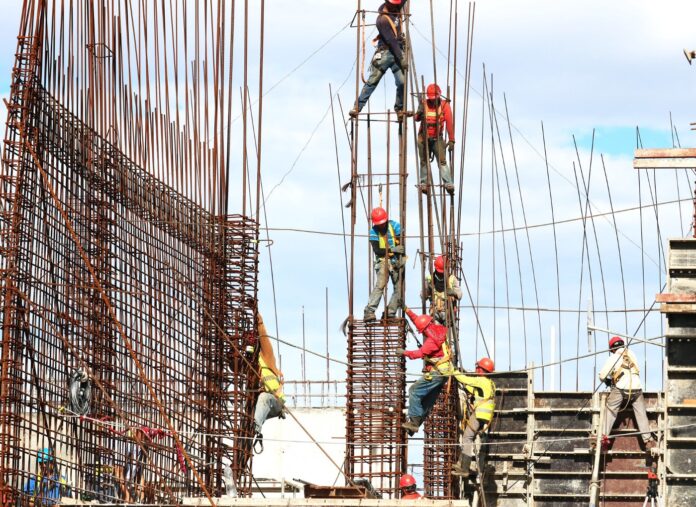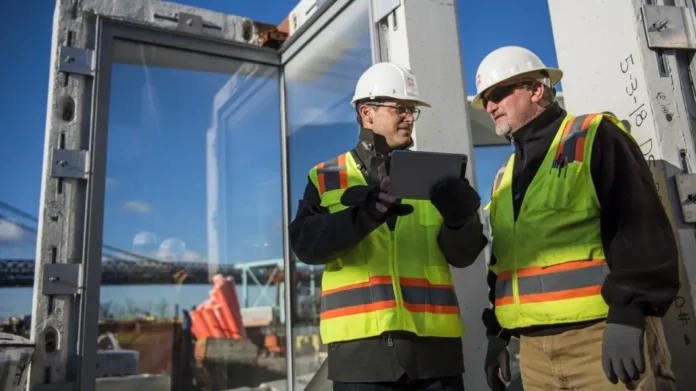Construction is a complex and challenging process that involves various stakeholders, resources, and techniques. With the increasing demand for infrastructure and housing, construction companies are under immense pressure to deliver projects within tight schedules and budgets.
To address these challenges, construction optimization has emerged as a crucial approach that helps companies optimize their processes, improve efficiency, minimize waste, improve project delivery times, and reduce costs.
Choosing ALICE Technologies to optimize construction projects can help. With ALICE, you can submit bids with confidence, reduce risk, and make more informed data-driven decisions.
Construction optimization is a core systematic approach that involves identifying, analyzing, and resolving inefficiencies in construction projects. Here’s what you need to know.
Key Components of Construction Optimization
Here are some key components of construction optimization.
Planning and Scheduling

One of the most critical components of optimization is effective construction planning and scheduling. This involves defining the scope of the project, determining the resources required, and creating a detailed timeline that outlines the entire construction process.
Proper planning and scheduling can help identify potential bottlenecks and inefficiencies in the construction process, enabling companies to address them before they become major problems.
Resource Management
Effective resource management is crucial to construction optimization. This involves optimizing the use of labor, materials, and equipment to ensure that resources are used efficiently and effectively. Resource management can help minimize waste and reduce costs while also improving project delivery times. You must try different resources to get the best deals on construction equipment and machinery, like you can check Utah’s backhoe bargains at Boom & Bucket.
Project Control

Project control is the process of monitoring and controlling the construction process to ensure that it stays on track and meets its objectives. This includes regular monitoring of the project timeline, budget, and quality, making adjustments as needed to keep the project on track.
Risk management
Construction projects are inherently risky, and effective risk management is critical to the success of construction optimization. This involves identifying potential risks and developing strategies to mitigate them to ensure that the project stays on track and delivers its intended outcomes.
Data and Technology
Data and technology play a critical role in construction optimization. Advanced technologies, such as Building Information Modeling (BIM), can provide valuable insights into the construction process and help identify areas for improvement. Data analysis can also help companies identify trends and patterns to make informed decisions to optimize their processes.
Benefits of Construction Optimization

Construction optimization offers several key benefits, including:
- Reduced costs – By minimizing waste and optimizing resources, construction optimization can help reduce costs and increase profitability.
- Improved project delivery times – By addressing inefficiencies and streamlining processes, construction optimization can help reduce project delivery times and improve project efficiency.
- Improved quality – Construction optimization can help ensure that projects are delivered to a high standard of quality by reducing the risk of errors and rework.
- Increased customer satisfaction – By delivering projects on time and within budget, construction optimization can help increase customer satisfaction and strengthen relationships with stakeholders.
- Better resource utilization – By optimizing the use of resources, construction optimization can help companies make the most of their available resources and ensure that they are used effectively and efficiently.
Challenges of Construction Optimization

Despite its many benefits, construction optimization is not without its challenges. Some of the key challenges include:
- Resistance to change – Construction companies often face resistance to change, as stakeholders may be hesitant to embrace new technologies and processes.
- Data integration – Data integration can be a challenge, as companies need to ensure that their systems and processes are able to effectively integrate and use data from various sources.
- Limited visibility – Limited visibility into the construction process can make it difficult to identify areas for improvement and develop effective optimization strategies.
- Data integration – Another challenge in construction optimization is the integration of data from different sources and stakeholders. This can make it difficult to get a complete and accurate picture of the construction process.
- Lack of standardization – Construction projects are complex and involve many different processes and stakeholders, making standardization a challenge. Standardized processes and data can help to optimize the construction process, but a lack of standardization can make it difficult to achieve this.
- Inadequate training – Employees need to be trained to use new technologies and processes, but this can be challenging in the construction industry. The lack of training can lead to the slow adoption of new processes, and may impact the success of construction optimization initiatives.
- Budget constraints – The high cost of construction projects can be a barrier to the implementation of construction optimization initiatives. Companies may be reluctant to invest in new technologies and processes that can help optimize the construction process.
- Complex regulations – Construction projects are subject to complex regulations, which can make it challenging to implement construction optimization initiatives. Companies need to be aware of these regulations and how they can impact construction optimization initiatives.
Future Trends in Construction Optimization

The construction industry is constantly evolving, and construction optimization is no exception. As new technologies and processes are developed, construction optimization will continue to evolve and grow. Here are some of the trends that are shaping the future of construction optimization:
Artificial Intelligence (AI) and Machine Learning
Artificial intelligence and machine learning are already being used in the construction industry to optimize processes, and this trend is expected to continue. These technologies can help companies analyze data and identify inefficiencies, leading to improved processes and better project outcomes.
Increased Use of BIM
Building Information Modeling (BIM) is a digital representation of the physical and functional characteristics of a building. The increased use of BIM is expected to drive construction optimization, as it provides real-time information about construction projects and allows companies to identify inefficiencies and make improvements.
Remote Monitoring and Management
The use of remote monitoring and management technologies is expected to increase in the future, allowing companies to track the progress of construction projects and make real-time decisions to optimize processes.
Virtual and Augmented Reality
Virtual and augmented reality technologies are becoming more sophisticated and are expected to play a larger role in construction optimization. These technologies can help companies visualize and experience construction projects before they are built, reducing the risk of errors and rework.
Collaborative Platforms
Collaborative platforms are becoming more prevalent in the construction industry, allowing companies to collaborate more effectively and optimize their processes. These platforms can help companies share information, track progress, and make decisions in real time, leading to improved project outcomes.
Blockchain Technology
Blockchain technology is expected to play a larger role in construction optimization in the future, as it can help companies secure data and track transactions. This can improve transparency and accountability in the construction process, leading to improved project outcomes.
Conclusion

Construction optimization is a critical aspect of the construction industry, aimed at improving the efficiency and effectiveness of construction projects. The industry is constantly evolving, and future trends in construction optimization mean that it is going to further streamline construction processes.








